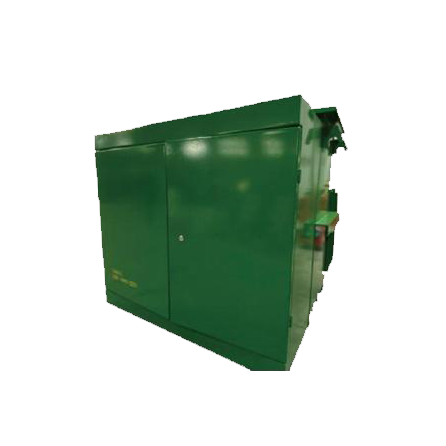Unveiling the Mineral Composition of Gabbro and Basalt: A Geological Perspective
4 min readWhen delving into the fascinating world of igneous rocks, gabbro and basalt stand out as two prominent members of the family. Both rocks are formed from the cooling and solidification of magma, yet they exhibit distinct characteristics and mineral compositions. Understanding the minerals found in gabbro and basalt not only enriches our geological knowledge but also has practical implications in various industries, including construction, landscaping, and even technology. This article aims to provide a comprehensive overview of the mineral content in these two rock types, highlighting their differences, similarities, and significance.
The Basics of Gabbro and Basalt
Before we explore the mineral compositions, it is essential to understand the fundamental differences between gabbro and basalt. Gabbro is a coarse-grained, intrusive igneous rock that forms when magma cools slowly beneath the Earth's surface. In contrast, basalt is a fine-grained, extrusive igneous rock that solidifies quickly at or near the surface. This difference in cooling rates leads to variations in texture and mineral size, which are crucial for identifying and classifying these rocks.
Mineral Composition of Gabbro
Gabbro is primarily composed of the following minerals:
- Plagioclase Feldspar: This mineral is the most abundant component of gabbro, typically comprising 50-70% of the rock. Plagioclase feldspar is a series of tectosilicate minerals that range from sodium-rich (albite) to calcium-rich (anorthite). The presence of plagioclase contributes to the rock's overall light color and plays a significant role in its crystallization process.
- Pyroxene: The second most abundant mineral in gabbro, pyroxene, usually accounts for 10-30% of the rock. Common varieties include augite and diopside. Pyroxene minerals are essential for understanding the thermal history of the rock, as they crystallize at higher temperatures compared to feldspar.
- Olivine: Although less common, olivine may be present in gabbro, particularly in more mafic varieties. This magnesium-iron silicate mineral contributes to the rock's density and is indicative of a more primitive magma source.
- Accessory Minerals: Gabbro may also contain accessory minerals such as magnetite, ilmenite, and apatite. These minerals, while not abundant, provide valuable information about the rock's formation and the conditions under which it crystallized.
Mineral Composition of Basalt
Basalt, on the other hand, has a different mineral composition, which includes:
- Plagioclase Feldspar: Similar to gabbro, plagioclase feldspar is the dominant mineral in basalt, typically making up 45-55% of the rock. However, the plagioclase in basalt is usually more sodium-rich than in gabbro, reflecting the differences in their formation environments.
- Pyroxene: Basalt also contains pyroxene, primarily in the form of augite. This mineral usually constitutes about 20-30% of the rock. The presence of pyroxene in basalt indicates rapid cooling and crystallization, which is characteristic of volcanic activity.
- Olivine: While olivine is less common in basalt than in gabbro, it can still be found in some basaltic compositions, particularly in more mafic varieties. Its presence can indicate a high-temperature formation environment.
- Glass and Other Minerals: Basalt often contains volcanic glass, which forms when lava cools too quickly for crystals to develop. Additionally, accessory minerals such as magnetite and hematite may be present, contributing to the rock's overall properties.
Comparative Analysis: Gabbro vs. Basalt
While both gabbro and basalt share some common minerals, their differences are significant. The coarse-grained texture of gabbro allows for larger crystal sizes, making it easier to identify individual minerals. In contrast, the fine-grained texture of basalt often obscures mineral identification, requiring more advanced techniques such as thin section analysis or scanning electron microscopy.
Moreover, the mineral composition reflects the geological processes that formed these rocks. Gabbro's formation from slowly cooling magma suggests a more stable environment, while basalt's rapid cooling indicates explosive volcanic activity. This distinction is crucial for geologists studying the Earth's crust and the processes that shape it.
Practical Implications
Understanding the mineral compositions of gabbro and basalt has practical applications across various industries. For instance, gabbro is often used as a dimension stone in construction due to its durability and aesthetic appeal. Its mineral content also makes it suitable for producing aggregate for concrete. Basalt, on the other hand, is frequently utilized in road construction and as a base material due to its strength and availability.
In the field of technology, basalt fibers are gaining attention for their lightweight and high-strength properties, making them ideal for use in composite materials. The unique mineral composition of basalt contributes to its suitability for these applications, highlighting the importance of understanding these rocks beyond their geological significance.
Conclusion
In summary, gabbro and basalt are two distinct igneous rocks with unique mineral compositions that reflect their formation processes. Gabbro, with its coarse-grained texture and abundance of plagioclase and pyroxene, contrasts with the fine-grained basalt, which also features these minerals but in different proportions. Understanding the mineral content of these rocks not only enhances our geological knowledge but also informs various practical applications across multiple industries. As we continue to explore the Earth's geological wonders, the study of gabbro and basalt remains a vital area of research, offering insights into the dynamic processes that shape our planet.

